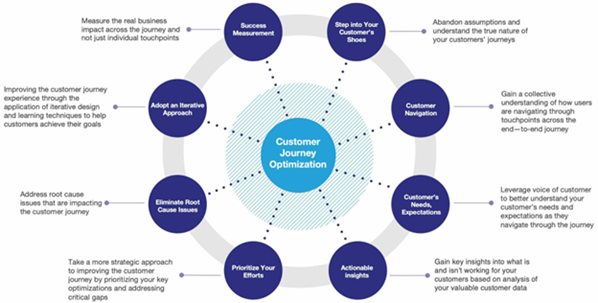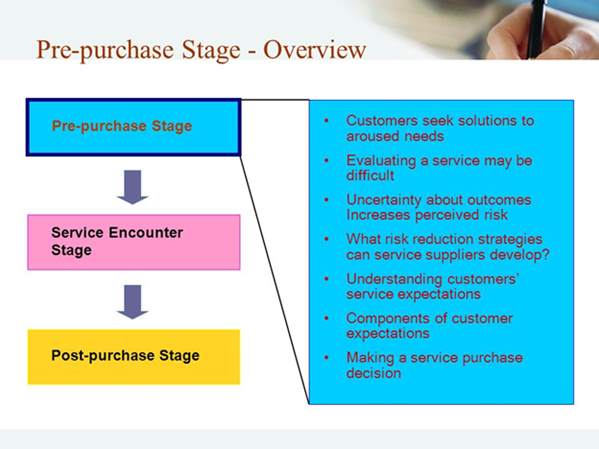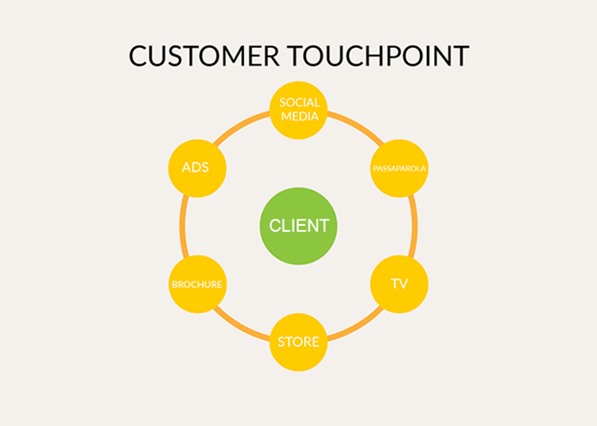
There are numerous ways that customers engage with your business. Each one is a chance for you to nurture their interactions towards a sale, referred to as customer touchpoints.
Optimizing your customer touchpoints can lead to stronger brand loyalty, more revenue, and improved sales.
A customer touchpoint is any interaction a customer has with a business, from first learnings to repeat sales. The second a customer begins looking for services and products, there is an opportunity for them to interact with your brand.
Your customer journey is composed of a set of touchpoints. Your customers travel through such touchpoints that result in them buying. They then travel along more touchpoints as they’re nurtured for repeat purchases and, later on, brand loyalty.
Thanks to digital innovation, there are numerous options for engagement channels and customer touchpoints. Nonetheless, that also makes it more challenging. After all, you might forget a touchpoint. You might also be absent from a big potential platform.
If you ignore vital touchpoints, you might end up losing your customers, their loyalty, as well as possible income at the end of the day.
Why is Consumer Touch Points Important?
Did you know that fifty-four percent of customers like to purchase from businesses that offer diversity, equity, and inclusion in their workplaces and communities? That suggests that how you engage with customers affects your brand reputation and overall bottom line. That involves the quality of customer support.
Learning your customer touchpoints is essential for the following reasons:
- Touchpoints offer great data – You can measure the success of your touch points along the way, providing you insight into what your customers are seeking.
- Establish brand loyalty – Customers have numerous touch points between finding your business and becoming loyal customers. Good experiences at each touchpoint support brand loyalty over time.
- Producing more sales – You can nurture more customers toward a sale if you get your touch points right. Imagine this. Each touch point is a conversion opportunity.

Customer Touch Points Examples
Remember that the customer journey looks diverse for each business. Thus, your customer touchpoints might not be the same as your competitors. Also, it comes down to how you advertise your business.
A single customer will never experience all of these touchpoints, but they’ll engage with your brand through many of those methods.
Here are the best examples of customer touch points that might apply to your business.
Pre-purchase stage
1. Blogs and articles
Publishing articles and blogs not just helps with search engine optimization, but you can also share the information on your social media platforms. Remember that well-written content establishes your brand as an authority and improves customer confidence in your business.
2. Online advertising
Customers are often exposed to ads on Google. On the other hand, they may also see banner ads or pop-up ads for your brand on other websites.
3. Social media
Big companies invest in SEO to make sure they rank well on search engines, especially for keywords that are relevant to their services or products. Each time a customer clicks a link to your Google page, your SEO is working.
4. Chat bots
Chat bots and self-service systems are becoming more typical. They are a traffic opportunity to deliver a positive experience for your customers. That’s why you need to ensure your self-service options are of the utmost quality.
5. Google My Business or local directory
With more and more customers looking for services and products nearby, especially on mobile search, it pays to make sure your Google My Business profile is properly set up. That and other industry directors provide you with an excellent opportunity to connect with a new audience.

Purchase stage
6. Online payment processing
Do you encounter a lot of abandoned shopping carts in your online store? There may be an issue with your online payment processing. Ensure you provide your customers with enough payment options to make checkout straightforward, lowering the number of missed sales.
7. Phone contact
Is your business taking purchases or bookings over the phone? That is another customer touchpoint that can either drive folks mad or turn them into satisfied returning customers.
8. Product reviews
This can also be included in the pre-purchase section as customers look for your business using reviews. However, it can also be in the purchase state as people using your online store may still be considering two products as they are about to purchase.
It can also fall into the post-purchase stage, as you can motivate satisfied customers to leave a positive review. What we’re trying to say is that reviews are essential!
9. Point of sale
Whether it is in-store or online, the point of sale experience must be a positive one. Also, friendly customer service plays an important role here, but so does the technology you employ.
Post-purpose stage
10. Newsletter
Another great option is to get customers’ agreement to send them marketing emails—such as a weekly newsletter with valuable tips or insights. That way, aside from updating your customers on the industry trends and news, your can highlight your special or seasonal offers. How cool is that?
But it’s important that you verify email address. After all, real customers begin with real emails, and the use of email validation is the most efficient way to guarantee the collection of high-quality data.
11. Customer loyalty programs
Running a customer loyalty program offers you numerous touch points over an extended time. Whether it is marketing special offers or giving customers loyalty benefits, loyalty programs make it simple to reward your loyal brand fans.
12. Community management
Consider your business as an online community, especially on social media. Customers always love engaging with your brand organically. They might also share their experiences and tag you or might even ask for a resolution for a complaint.
Dealing with this online community with fast responses goes a long way in establishing brand loyalty.
13. Customer support
In the world of business, you will be fortunate if you never have post-sale concerns, returns, or complaints. It is part of running a business, and the way you deal with customer support could have an effect on whether customers go elsewhere or return in the future.
14. Billing
Getting an invoice is another crucial touchpoint for all your customers. It is crucial to make sure the process is as smooth as possible for your customers. You can achieve that by presenting them numerous payment methods.
15. Customer feedback
Keep in mind that successful companies utilize feedback as a means of improving their services and providing what customers want.

Conclusion
Customer touchpoints influence your bottom line. It is vital that you put a lot of thought into your touchpoint strategy. Pleasing your existing and potential customers throughout the entire customer journey can have a positive effect on your bottom line and revenue.
Now that you have a good overview of how customer touchpoints can possibly impact your bottom line, you can now proceed with designing and optimizing your customer journey map.
Eventually, your customer experience strategy will be a well-oiled machine that continuously pulls in sustainable revenue for your online business.
By clearly knowing all your customer touchpoints, you can also work on optimizing each of them and boost your chances of a sale.




